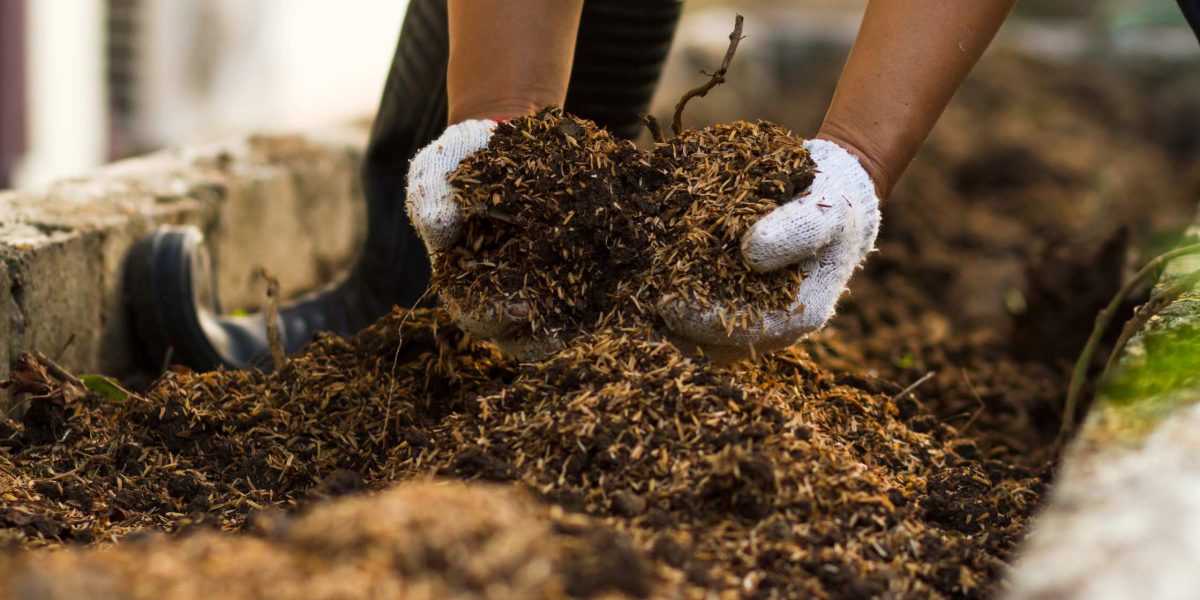Introduction
Spring is here, and it’s the perfect time to give your lawn and garden the nutrients they need to thrive! One of the most effective, eco-friendly ways to boost soil health is through composting. Whether you’re a home gardener or just looking for a greener way to care for your lawn, compost can transform your landscape. In this guide, we’ll break down how composting works, why it’s beneficial, and how you can use it effectively in San Antonio’s unique climate.
What is Compost and Why Does Your Lawn Need It?
Compost is decomposed organic material, like food scraps and yard waste, that turns into a nutrient-rich soil amendment. Instead of relying on synthetic fertilizers, compost naturally enriches your soil, improving its structure and providing essential nutrients for plants.
✔ Boosts Soil Health – Compost improves soil texture, helping it retain moisture and drain efficiently.
✔ Reduces the Need for Chemical Fertilizers – Compost slowly releases nutrients, eliminating the need for harsh synthetic products.
✔ Encourages Microbial Activity – Healthy soil is full of beneficial microbes that break down nutrients for plant roots.
✔ Protects Against Drought – In San Antonio’s dry climate, compost helps soil hold moisture longer, reducing water usage.
How to Make Your Own Compost at Home
Creating compost is easy and can be done with simple materials you already have!
1. Choose a Composting Method
- Traditional Compost Pile: Great for larger yards—just start a pile of organic waste in a shaded spot.
- Compost Bin: A contained option that keeps things neat and pest-free.
- Compost Tumbler: A faster way to compost that allows you to turn materials easily.
2. Know What to Add
To keep your compost balanced, aim for a mix of green materials (rich in nitrogen) and brown materials (rich in carbon).
✅ Green Materials (Nitrogen):
- Fruit and vegetable scraps
- Coffee grounds
- Grass clippings
- Eggshells
✅ Brown Materials (Carbon):
- Leaves
- Shredded newspaper or cardboard
- Twigs and small branches
- Sawdust (untreated)
🚫 Avoid: Meat, dairy, oils, pet waste, and anything treated with pesticides.
3. Maintain Your Compost
- Turn it Regularly: This aerates the pile and speeds up decomposition.
- Keep it Moist: Like a damp sponge—too wet can cause odor, too dry can slow the process.
- Be Patient: Depending on the method and conditions, compost is ready in 2-6 months.
How to Use Compost in Your San Antonio Lawn and Garden
Once your compost is ready, here’s how to use it for the best results:
🌱 For Lawns: Spread a thin layer over your lawn to naturally fertilize it and improve soil health.
🌿 For Garden Beds: Mix compost into the soil before planting flowers, vegetables, or shrubs.
🌳 For Trees and Shrubs: Apply compost around the base of trees and shrubs to provide slow-release nutrients.
🍂 As Mulch: Use compost as a natural mulch to retain moisture and suppress weeds.
Composting Tips for San Antonio’s Climate
☀ Protect Your Compost from the Heat: Keep it shaded to prevent it from drying out.
💧 Water It as Needed: Compost can dry out quickly in Texas—lightly water if it gets too dry.
🍂 Use Local Resources: Take advantage of fallen leaves and grass clippings for a well-balanced compost.
🐜 Prevent Pests: Cover fresh food scraps with brown materials like leaves or soil.
Need Help With Your Lawn? Lawn DR Landscaping Has You Covered!
Composting is a great way to keep your lawn and garden healthy, but if you need professional lawn care and landscaping services, we’re here to help! Whether you need soil enrichment, mulching, or full lawn maintenance, Lawn DR Landscaping has the expertise to keep your landscape looking its best.
📞 Contact us today to learn more about how we can help your San Antonio lawn thrive!

